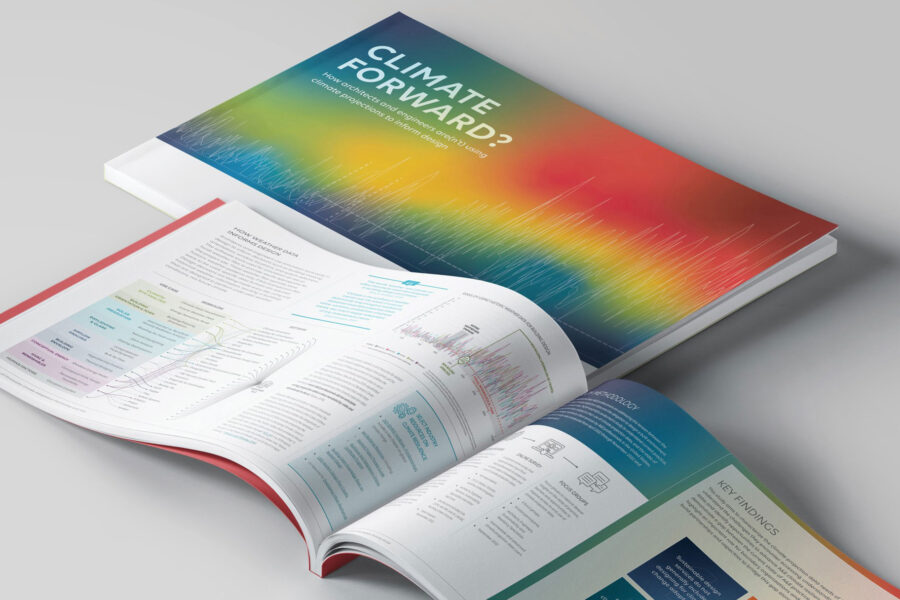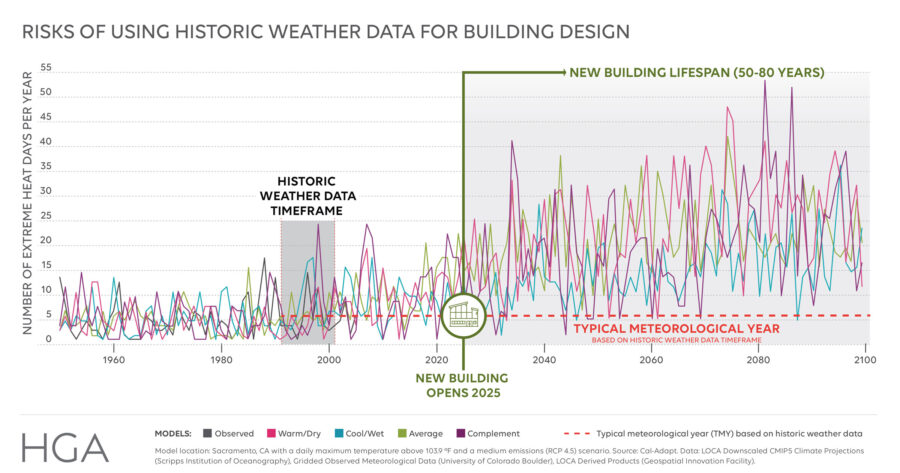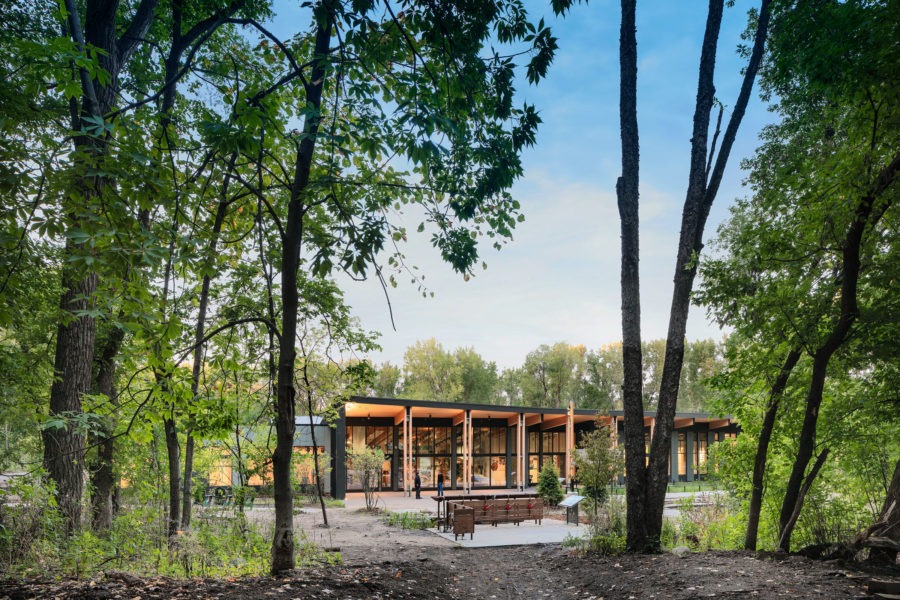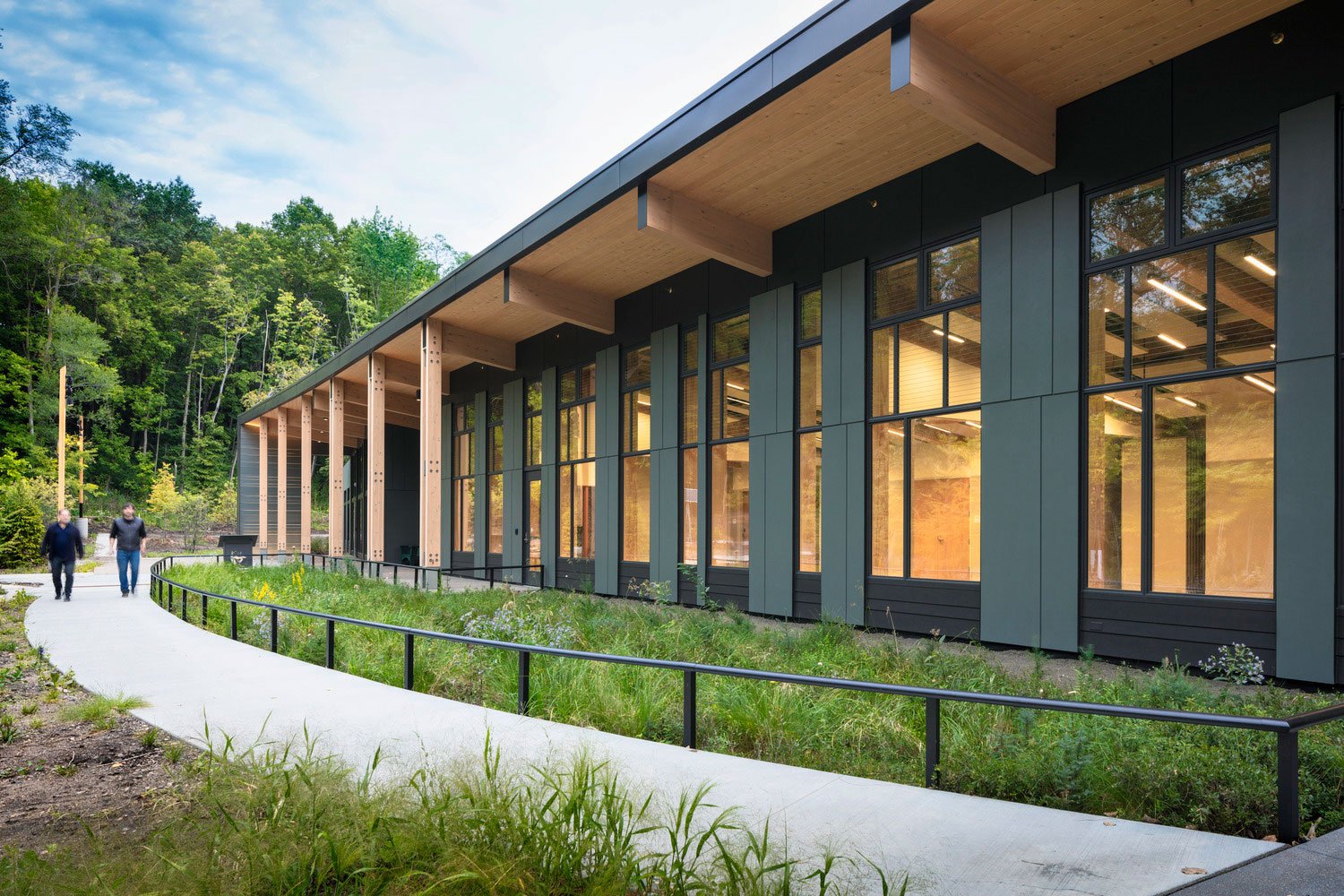Story at a glance:
- A study from HGA and the University of Minnesota Climate Adaptation Partnership examines the need for climate adaptive design solutions.
- Changes in climate that have already occurred and are projected to occur must be accounted for when designing for climate change adaptation and mitigation.
Architects and engineers are well-positioned to use climate projection data to inform design and provide clients with climate adaptive solutions. Yet there remains a concerning lag in industry-wide adoption of these forward-looking metrics. A joint study from HGA and the University of Minnesota Climate Adaptation Partnership takes a closer look at this disconnect.
Typically design professionals rely on historical weather data as a primary resource for performance analysis and design. This data, sometimes more than three decades old, is based on past median weather conditions and has traditionally been considered sufficient for establishing “climate normals” and is reinforced by existing standards, laws, and conventions. However, our changing climate renders these characterizations much less useful—poorly reflecting the range, frequency, and intensity of potential future weather conditions a building will need to withstand during its lifespan. Put simply—changes in climate that have already occurred and are projected to occur must be accounted for when designing for climate change adaptation and mitigation.
To better understand how building professionals are (or aren’t) addressing this tension between the lack of codified climate projection data and the obligation to design a built environment prepared for climate risk, HGA and the University of Minnesota Climate Adaptation Partnership (MCAP) conducted a study focused on the current practice, barriers, and opportunities related to the use of climate projection data—and the state of current climate change and resiliency services by architects and engineers in the US.
This mixed-method study was conducted between April and November 2022 and involved a tiered approach including a literature review, an online survey, and focus groups.
Key Findings

HGA and the University of Minnesota Climate Adaptation Partnership conducted a study focused on the current practice, barriers, and opportunities related to the use of climate projection data. Photo courtesy of HGA
The resulting report details four key findings that demonstrate a gap between the current state of our industry and climate science and articulates a key role for boundary organizations and climate data developers for building partnerships and capacities to bridge this gap alongside architecture and engineering professionals.

Image courtesy of HGA
1. Sustainable design services are primarily focused on climate change mitigation (reducing carbon emissions) and do not often include designing for climate change resilience (design measures that factor in the projected climate over the lifespan of the building and systems).
2. While industry professionals are aware of and interested in using climate projection data in their work, few firms are regularly using projections to inform design decisions.
3. Industry professionals identify a number of barriers to using climate projection data—including a lack of client requests; a lack of standards and codes; resolution needs; format, content, and cost; trust of the data; and a need for internal expertise to use the data.
4. There is a strong need for the development and promotion of industry standards, mandates (including building codes), guidance and training for using climate projections in architecture and engineering applications.

HGA designed the Westwood Hills Nature Centerto be zero energy. Photo by Pete Sieger
The climate is changing rapidly. Action must be taken now and must involve substantive collaboration with climate data developers, boundary organizations, industry associations and professionals, policy makers, building code and standards bodies, higher education institutions, and any organization that hires architecture and engineering professionals.
Industry associations should provide guidance and standards to their members and by code bodies to require these new workflows to be followed. In addition, these results communicate to climate experts and agencies like the US Global Change Research Program and boundary organizations like MCAP that the research and reports they release—providing information on population-level climate risks and impacts—are being utilized by industry professionals motivated to increase resilience in the built environment. This should be a motivation to bolster direct industry involvement in these influential reports to continue capturing concerns and perspectives.
Heidi Roop, director of the University of Minnesota Climate Adaptation Partnership, contributed to this article.





